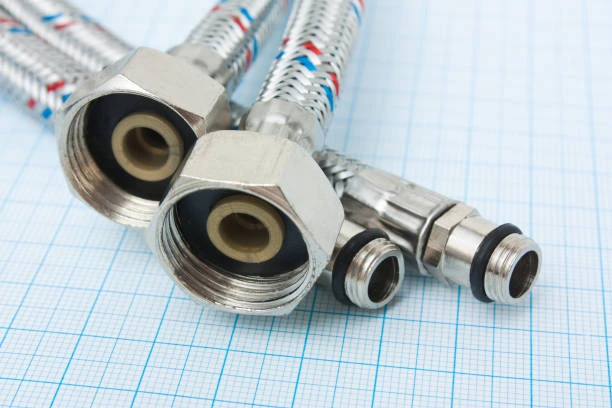
Reinforced braid hoses are critical components in countless industrial, automotive, and hydraulic systems, providing reliable conveyance of fluids and gases under high pressure. However, their durability and performance heavily depend on regular and thorough inspection. Proper examination can identify early signs of wear, damage, or potential failure, preventing costly downtime, safety hazards, and system malfunctions. This comprehensive guide explores the importance of inspecting reinforced braid hoses, detailing their fundamental characteristics, common applications, and best practices for evaluation. Whether you are a maintenance professional, engineer, or operator, understanding how to effectively check these hoses will ensure operational efficiency, extend service life, and uphold safety standards across various industries.
Frequently Asked Questions (FAQ)
1. Why is regular inspection necessary for reinforced braid hoses?
Regular inspection helps identify issues like abrasion, cracks, leaks, or braid damage before they lead to hose failure. This proactive approach minimizes unexpected downtime, reduces repair costs, and ensures safe operation in high-pressure environments.
2. What are the most common signs of wear in reinforced braid hoses?
Common signs include visible cracks or cuts on the outer cover, abrasion exposing the braid layer, leaks around fittings or along the hose length, bulging or blistering, and corrosion on metallic braids. Any of these symptoms warrant immediate attention.
3. How often should reinforced braid hoses be inspected?
Inspection frequency depends on usage conditions, such as operating pressure, temperature, and exposure to abrasive or corrosive environments. For high-stress applications, weekly or monthly checks are advisable, while less critical systems may require quarterly inspections.
4. Can visual inspection alone ensure hose reliability?
While visual inspection is essential, it may not always detect internal damage or gradual degradation. Combining visual checks with pressure tests, leak tests, and tactile inspections (e.g., feeling for soft spots or stiffness) provides a more comprehensive assessment.
5. What steps should be taken if a hose fails inspection?
If a hose shows signs of significant wear or damage, replace it immediately. Do not attempt temporary repairs, as reinforced braid hoses operate under high pressure and require full integrity to function safely.
Basic Definition and Features
Reinforced braid hoses are flexible tubes designed with one or more layers of braided reinforcement, typically made from steel, synthetic fibers, or thermoplastics. This construction enhances their strength, pressure resistance, and durability while maintaining flexibility. The inner tube, often composed of materials like rubber, PTFE, or thermoplastic, ensures compatibility with the conveyed media, while the outer cover protects against environmental factors such as abrasion, chemicals, and UV exposure.
Key features of reinforced braid hoses include their ability to withstand high pressure and temperature fluctuations, resistance to corrosion and abrasion, and flexibility for easy routing in complex systems. These characteristics make them ideal for demanding applications, but they also mean that wear and tear can occur over time. Understanding their structure is crucial for effective inspection, as damage to any layer—inner tube, braid reinforcement, or outer cover—can compromise functionality and safety.
Common Uses and Application Industries
Reinforced braid hoses are widely used across industries where reliable fluid or gas transfer is essential. Their robustness makes them suitable for high-pressure environments, and their versatility allows for diverse applications.
In the automotive and transportation sectors, these hoses are found in brake systems, power steering, fuel lines, and turbocharger systems. Regular inspection is vital to ensure vehicle safety and performance. The manufacturing and industrial machinery sectors use reinforced braid hoses in hydraulic and pneumatic systems, where failure could lead to operational disruptions or accidents. Inspection here focuses on wear from constant movement and pressure cycles.
The aerospace industry relies on these hoses for fuel, hydraulic, and coolant systems, where failure is not an option. Inspections are rigorous and follow strict protocols. In oil and gas, reinforced braid hoses transport chemicals, fuels, and hydraulic fluids in both onshore and offshore facilities. Exposure to corrosive substances and high pressures necessitates frequent checks for leaks and degradation.
Additionally, these hoses are used in agricultural equipment, construction machinery, and marine applications. In each case, inspection practices help maintain efficiency and prevent failures that could result in costly repairs or safety incidents.
Conclusion
Reinforced braid hoses are indispensable to modern industrial and mechanical systems, but their reliability hinges on consistent and careful inspection. Understanding their construction, recognizing common signs of wear, and adhering to a regular inspection schedule can prevent failures, enhance safety, and prolong service life. From automotive to aerospace, these hoses play a vital role, and maintaining their integrity ensures operational continuity and cost-effectiveness. By implementing the practices outlined in this guide, professionals can safeguard their systems, optimize performance, and contribute to a culture of safety and reliability. Remember, a proactive approach to inspection today can prevent emergencies tomorrow.
IFNS’s international standards
IFNS products comply with a wide range of international standards, including ASTM 2846, DIN 8079/8080, ASTM F441/F441M SCH80, GB/T 18993 series, AS/NZS 1477, CSA B137.6, NSF/ANSI 14, and TIS 17-2532/1131-2535. These certifications ensure that our pipes and fittings meet global quality, safety, and performance requirements.
Connect
IFNS, a Chinese manufacturer with 30 years of experience, specializes in high-quality plastic pipes, fittings, and valves. Interested in IFNS’s copper fittings, copper valves, plastic pipes, or fittings? Contact us today. IFNS offers a wide range of standard pipes tailored to your needs. Explore our affordable, cost-effective valve and piping system products.
We respond to emails or faxes within 24 hours. For immediate assistance, call us anytime with questions about our products.







